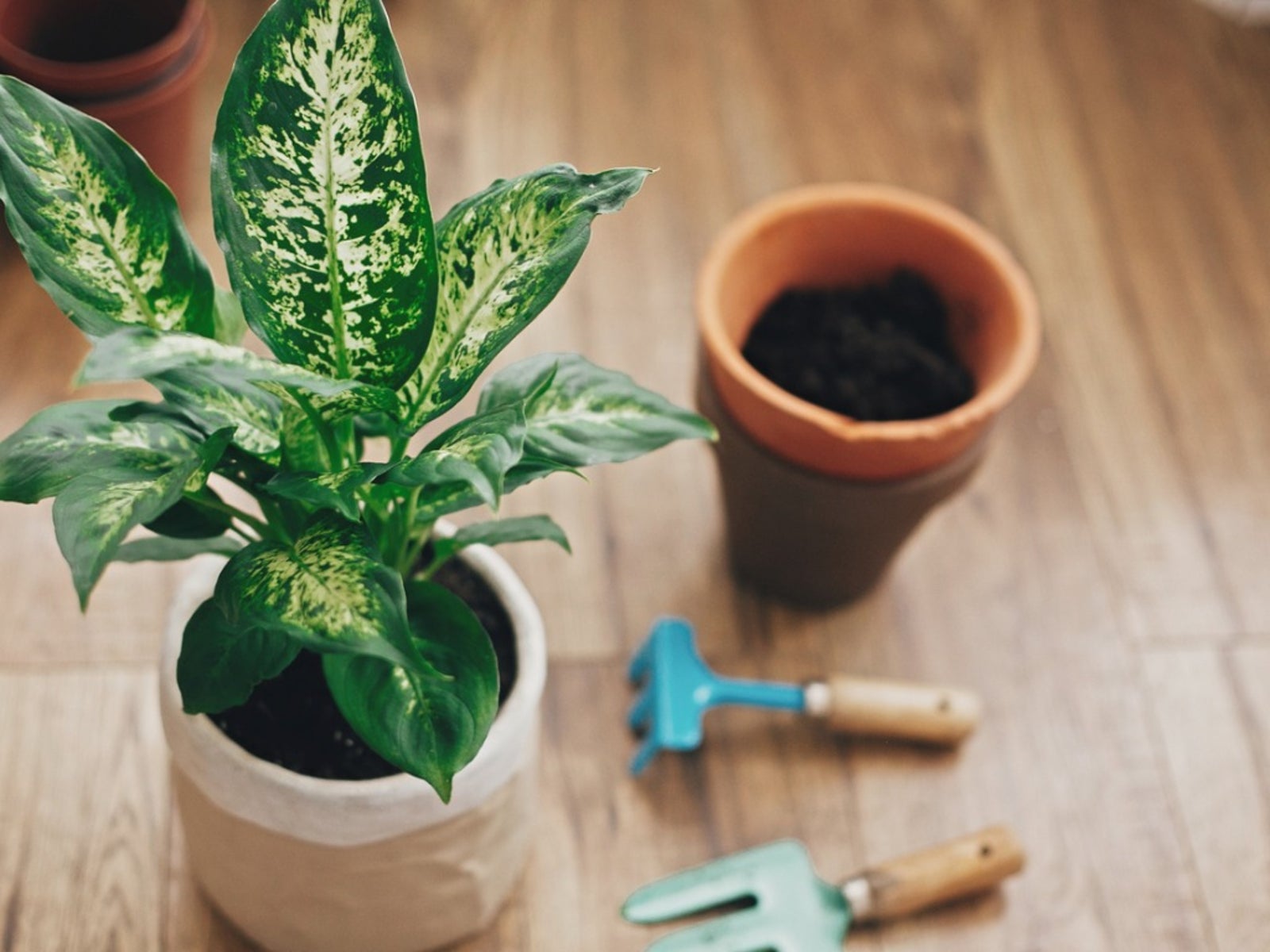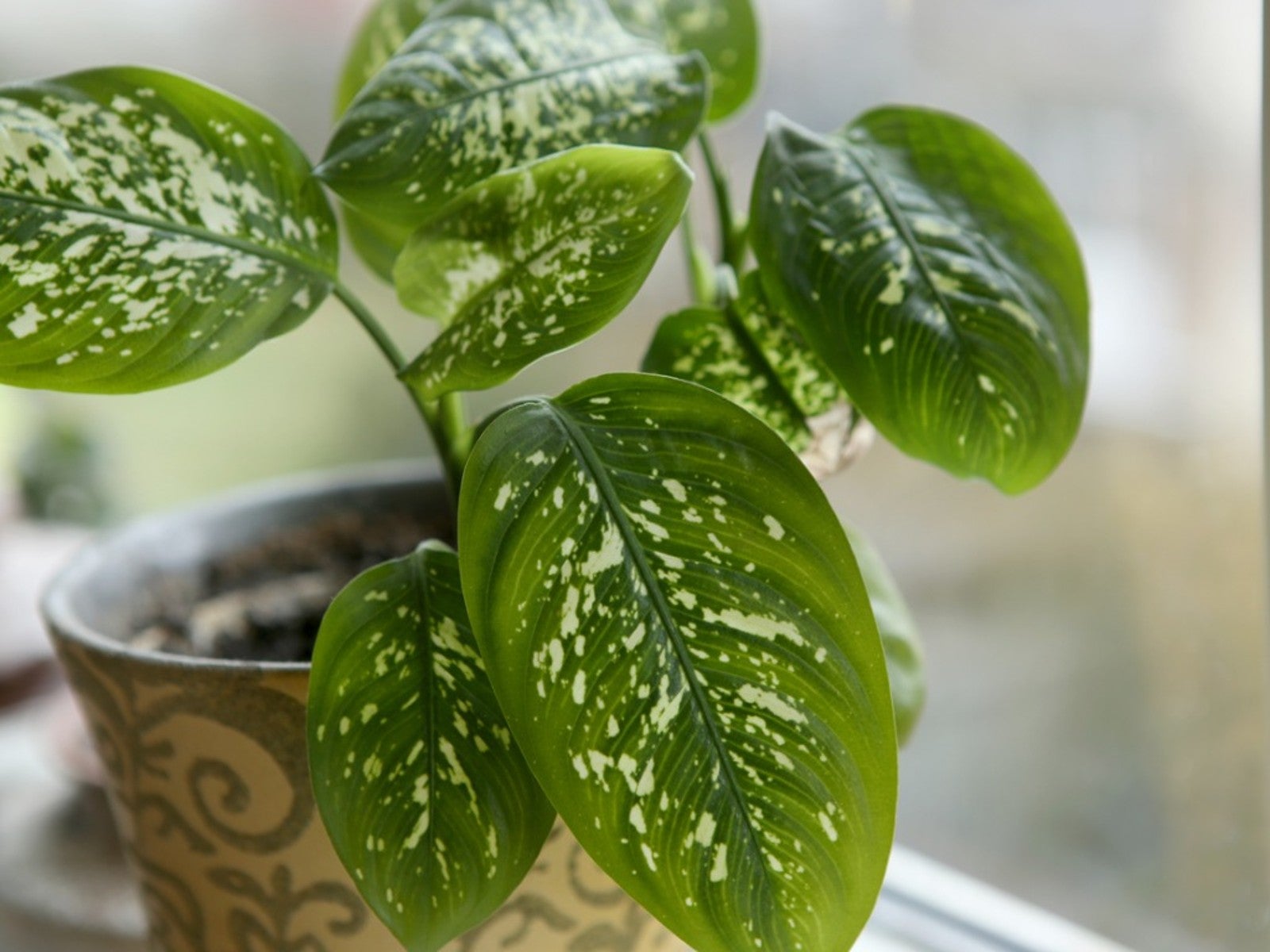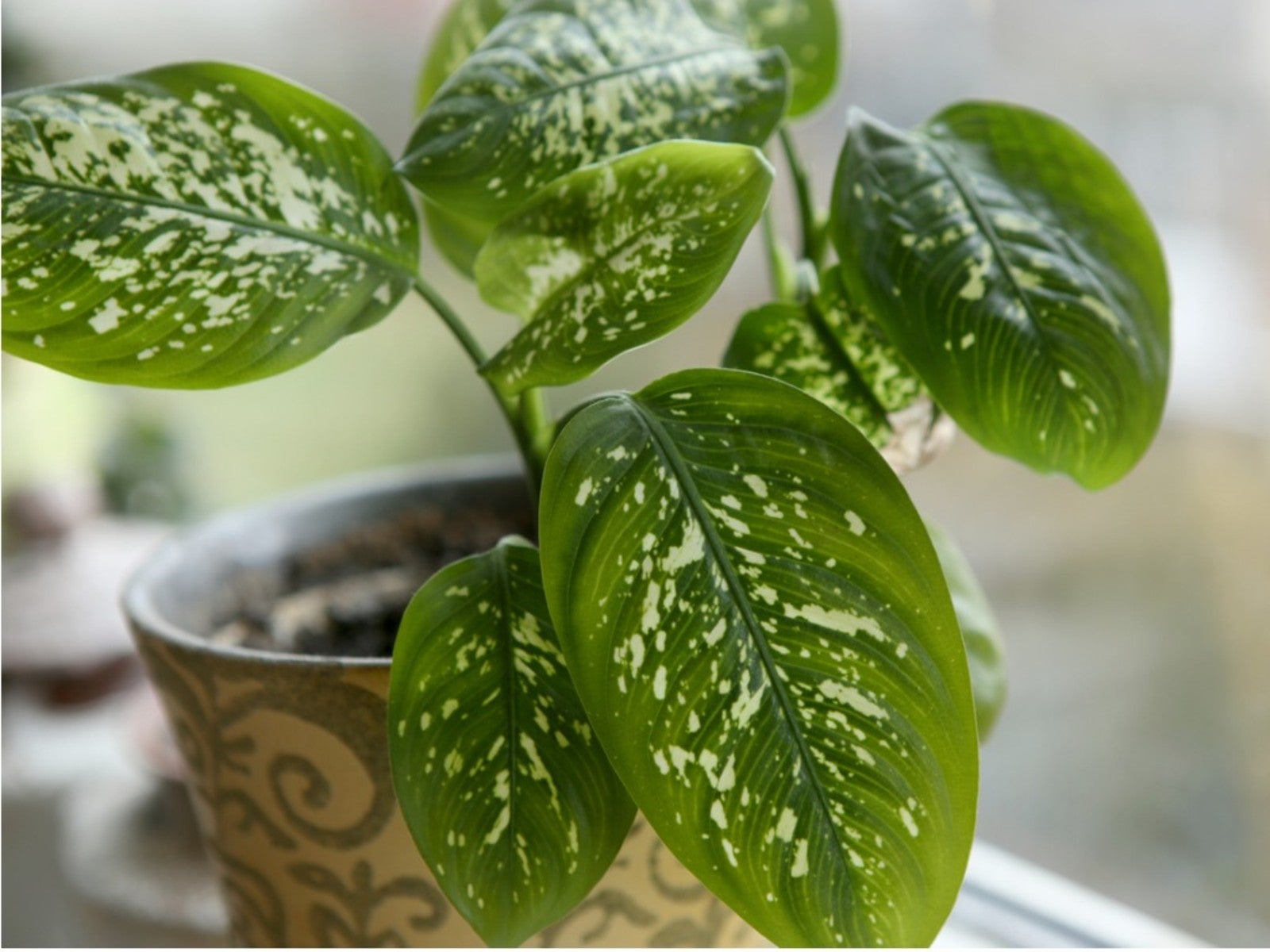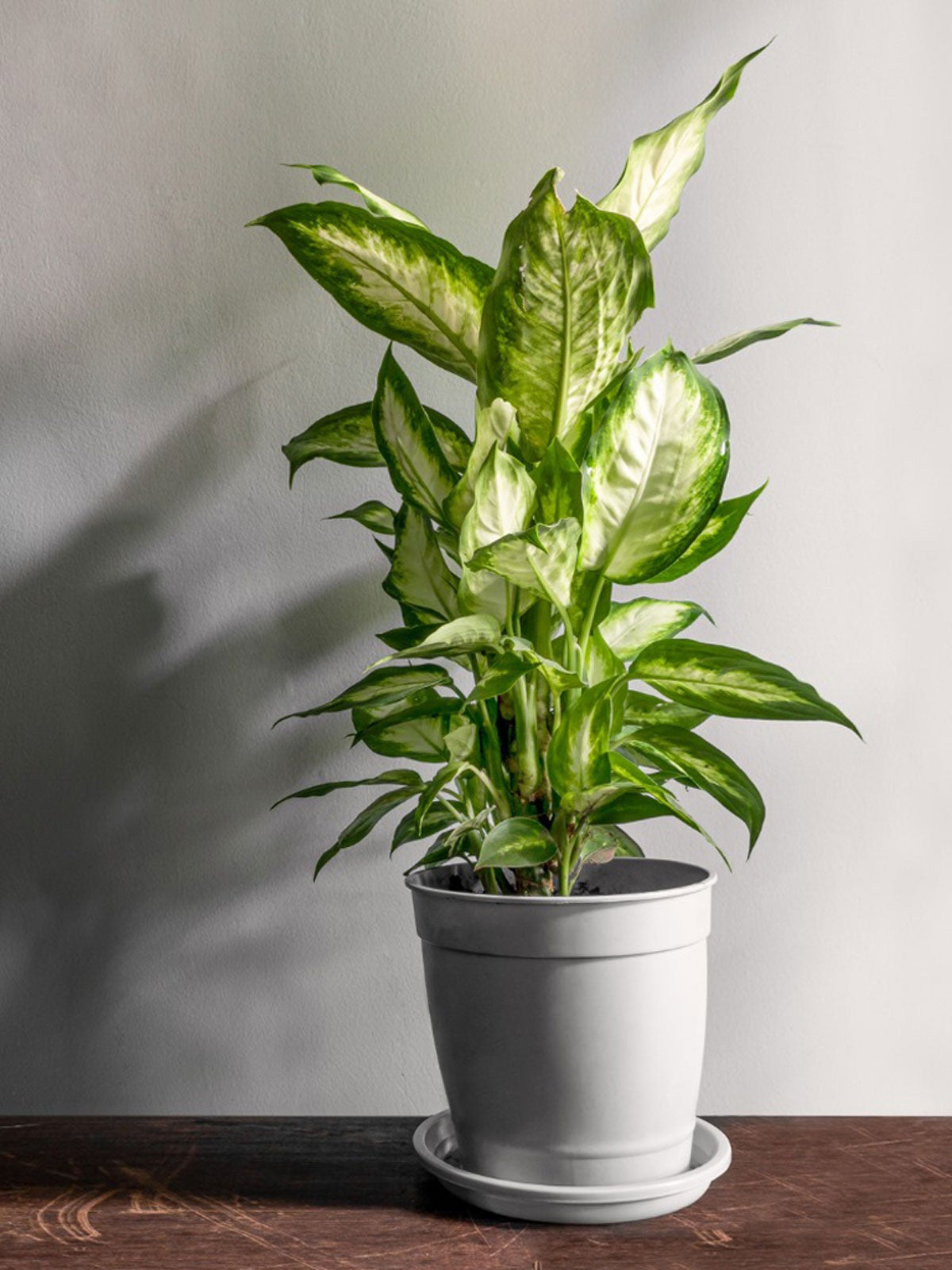Propagating A Dieffenbachia: How To Propagate Dieffenbachia Plants

Dieffenbachia can be an attractive and almost carefree houseplant that adds a tropical statement to almost any room. Once you have a healthy plant growing in your home, you have the potential for an endless supply of new, smaller plants simply by propagating cuttings and clippings from the original parent plant. Keep reading for information on propagating a dieffenbachia plant.
Dieffenbachia Propagation
Dieffenbachia is also known as the dumb cane because the stems and leaves contain a chemical that will sting and burn the mouth for weeks if it comes in contact with the tender flesh. It can also cause loss of speech and the sap or juice from the stems can irritate the skin.
Always wear rubber gloves and consider using eye protection every time you work with your dieffenbachia, especially when rooting a dieffenbachia clipping. Starting a collection of new dieffenbachia plants is a simple procedure that even the most novice indoor gardener can easily handle.
How to Propagate Dieffenbachia Plants
The easiest way to propagate your dieffenbachia is by rooting cuttings, either tip cuttings or stem cuttings. Plant these small pieces of greenery in the right medium and they will produce roots and, eventually, an entirely new plant.
Use a sharp razor blade to remove parts of the plant to be used for dieffenbachia propagation and always make sure to discard this razor blade after use to prevent the spread of irritating chemicals. Cut the tips from the end of the plant or look for shoots coming from the main stem.
If your plant is overgrown and has dropped so many leaves that you have a bare stem, slice this stem into 2 inch (5 cm.) pieces and use these for propagation. Just make sure to keep the stems right side up, as the roots will only grow if you stick the right end of the stem in the rooting medium. Fill a planter with sand, sphagnum moss, or another rooting medium.
Moisten the entire contents and let it drain before planting the cuttings. Moisten the cut end of the cutting or the bottom end of the stem piece and dip it in a spoonful of rooting hormone powder. Tap the cutting gently to remove any excess powder. Make a small hole in the planting medium with a pencil and place the powdered stem end in the hole.
Gardening tips, videos, info and more delivered right to your inbox!
Sign up for the Gardening Know How newsletter today and receive a free copy of our e-book "How to Grow Delicious Tomatoes".
Push the medium up against the stem to hold it in place. Repeat with all the other pieces of stem you wish to root. Keep the cuttings moist, but not wet, and place the planter in a warm, dim spot. Depending on the variety of dieffenbachia plant you own, you should see new roots growing in three to eight weeks. Wait until you have new green shoots growing before transplanting the baby plants to new containers.
-
 Zinnias On Repeat: 10 Glorious Cut-And-Come-Again Varieties For Endless Summer Bouquets
Zinnias On Repeat: 10 Glorious Cut-And-Come-Again Varieties For Endless Summer BouquetsThese zinnia varieties keep giving all summer, making them the perfect choice for dedicated cutting gardens – or just the occasional homegrown bouquet.
By Ellen Wells
-
 Create A Romantic Garden Straight Out Of Bridgerton: Regency Era Romance In Your Garden
Create A Romantic Garden Straight Out Of Bridgerton: Regency Era Romance In Your GardenTry some romantic garden ideas straight out of Bridgerton. Flowers and gardens in the Regency era were lush and charming and you can get the same look!
By Bonnie L. Grant
-
 Dieffenbachia Pruning Guide – Should You Cut Back Dieffenbachia Plants
Dieffenbachia Pruning Guide – Should You Cut Back Dieffenbachia PlantsDieffenbachia can tend to get leggy and grow unwieldy top growth in some situations. That’s when you know it is time to cut it back.
By Bonnie L. Grant
-
 Dieffenbachia Troubleshooting – Learn About Dieffenbachia Diseases
Dieffenbachia Troubleshooting – Learn About Dieffenbachia DiseasesDon’t be surprised if you have problems with dieffenbachia, as it is no different from other plants when it comes to this. Read on for tips.
By Becca Badgett
-
 Dieffenbachia Care In Winter: How To Winterize Dieffenbachia Plants
Dieffenbachia Care In Winter: How To Winterize Dieffenbachia PlantsOverwintering houseplants is important, and dieffenbachia needs specific conditions in the winter. Click this article for more information.
By Mary Ellen Ellis
-
 Growing Dumbcane Dieffenbachia - How To Care For A Dieffenbachia Plant
Growing Dumbcane Dieffenbachia - How To Care For A Dieffenbachia PlantA true houseplant standby, Dieffenbachia is a beautiful specimen. Click here to learn about this beautiful classic.
By Becca Badgett